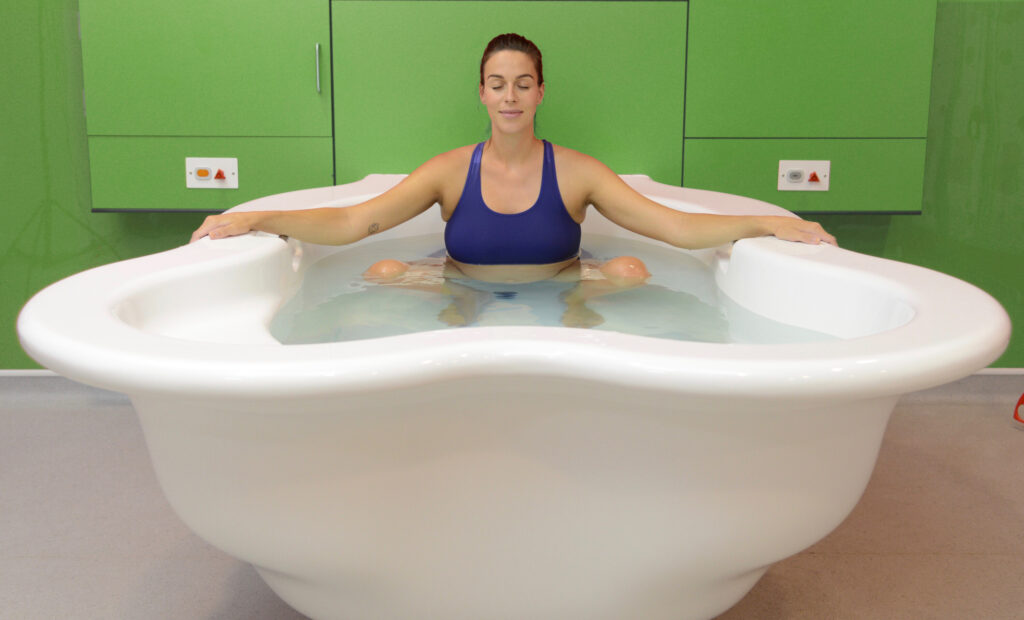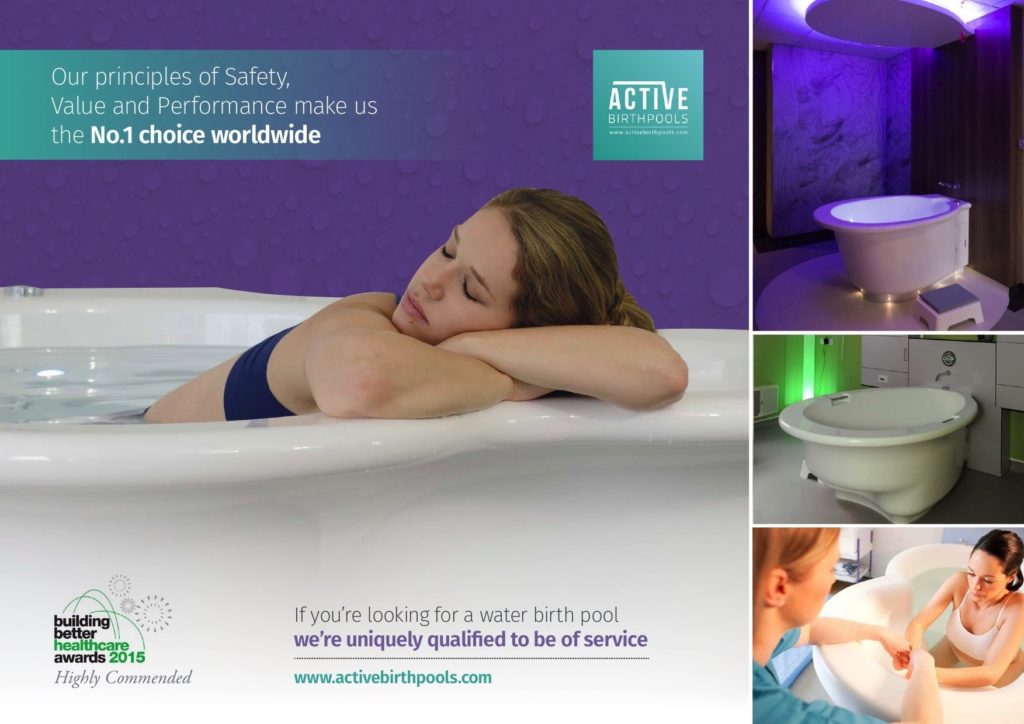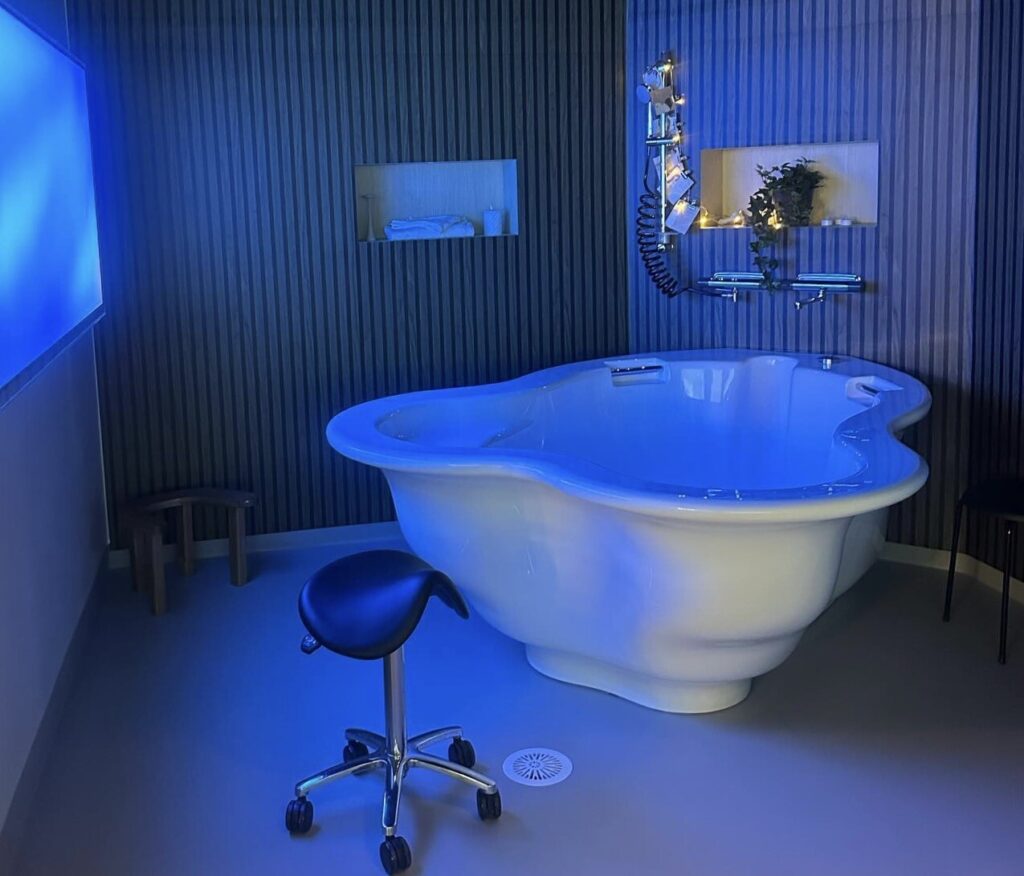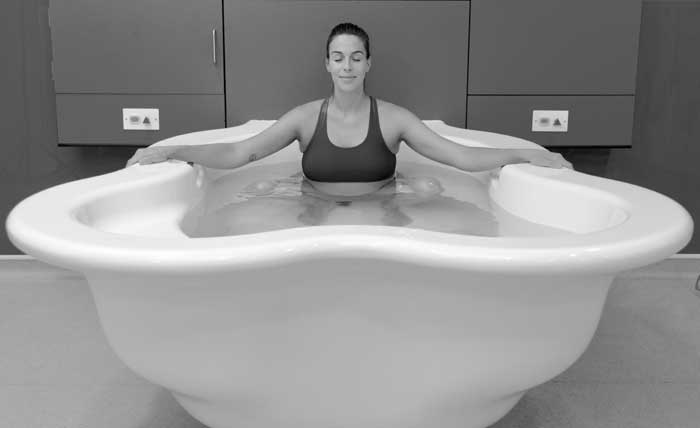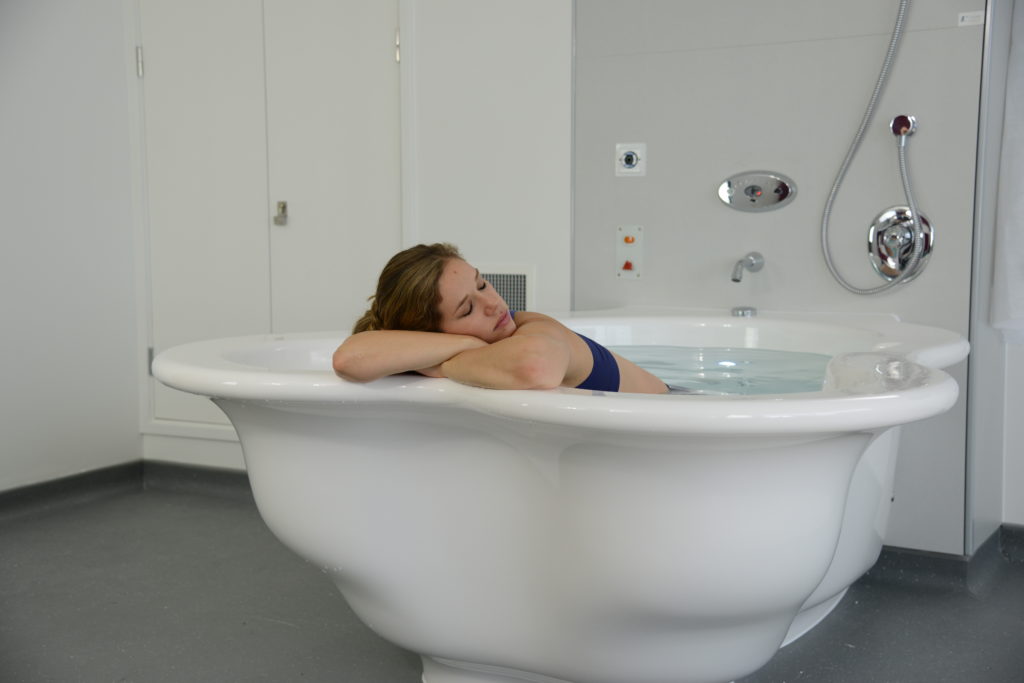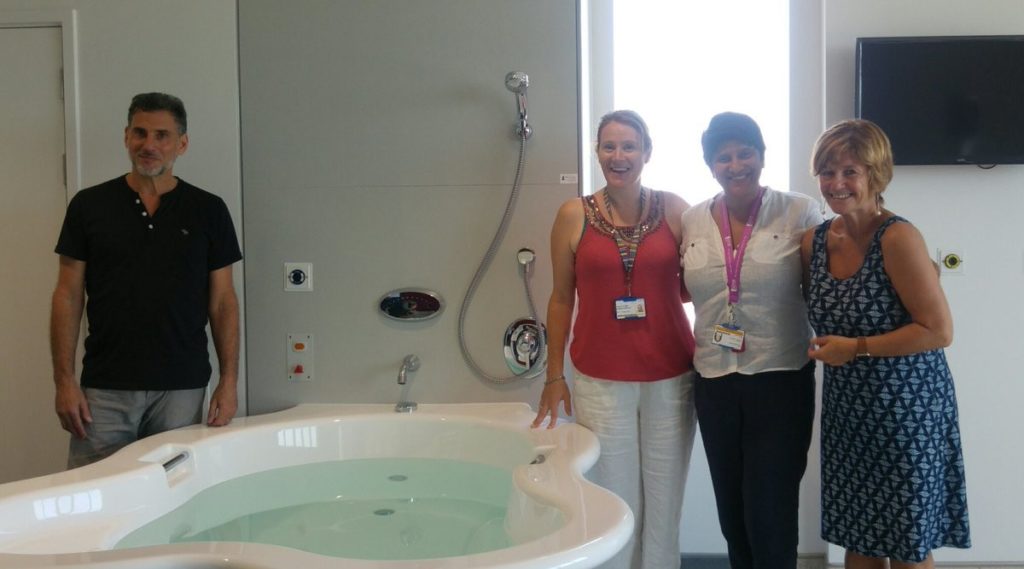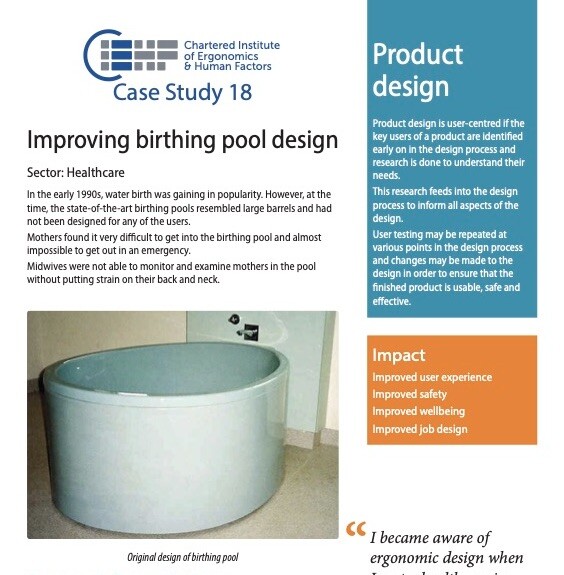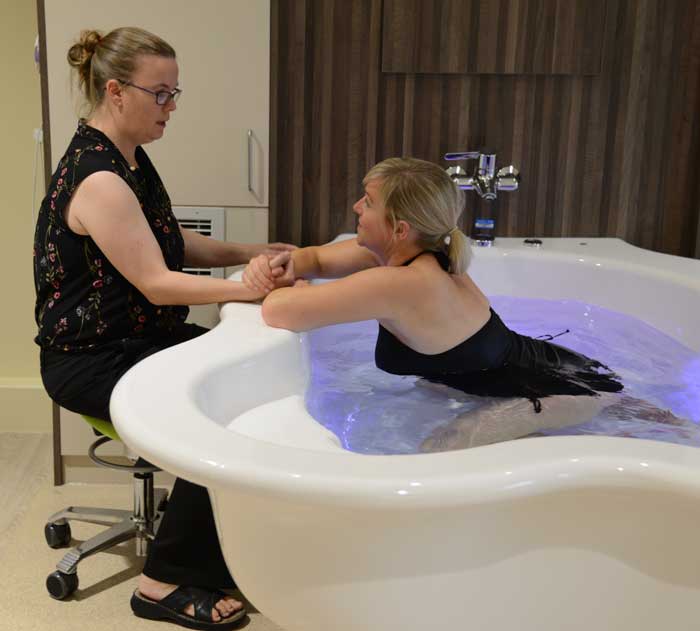There are manual handling issues and risks associated with water birth pools that affect both mothers and midwives.
Most of the risks stem from the design and equipping of the water birth pools themselves and this is where this article will focus.
These issues concern rim mounted fixtures and fittings, emergency evacuations, midwives comfort and support, and mothers getting in and out of the pool.
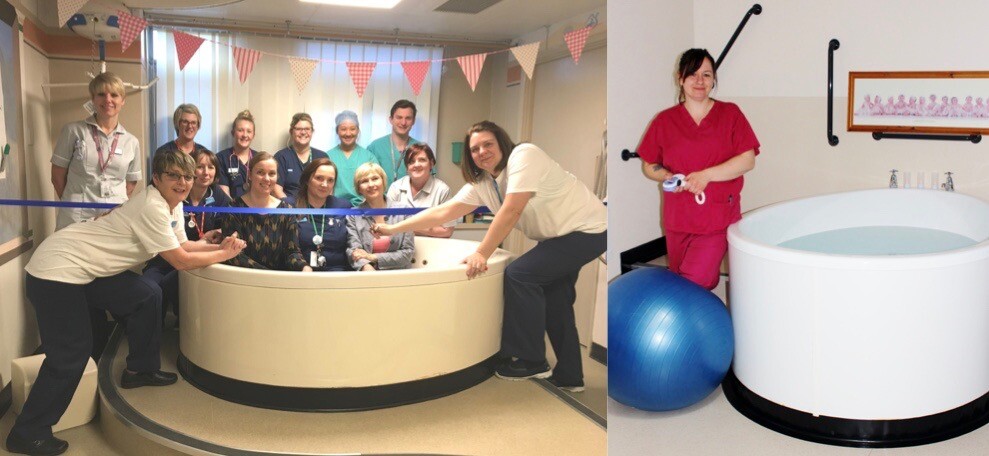
If you look at our birthing pools from the early 1990’s (above) you’ll notice the vertical skirting panels and narrow rims.
This design has serious manual handling issues which we resolved in 1995 with the help of Health Service Ergonomist Sue Hignett and the midwives at Nottingham City Hospital.
The problem is that the pool forms an obstacle between the mother and the midwife. Midwives are not supported or safeguarded and cannot sit closely to the mother in comfort.
They are forced to sit away from the pool with their legs splayed apart and then lean forward to be closer to the mother.
This creates the ideal physical dynamic that causes lower back pain (a common complaint from midwives attending water births).
In addition, the narrow rims are not comfortable for resting on as pressure is concentrated in a small area of the forearm.
To make matters worse these birthing pools:
– make it more difficult for mothers to get into the pool necessitating the need for large step units which put both mothers and midwives at risk.
– and more difficult for midwives to facilitate emergency evacuations.
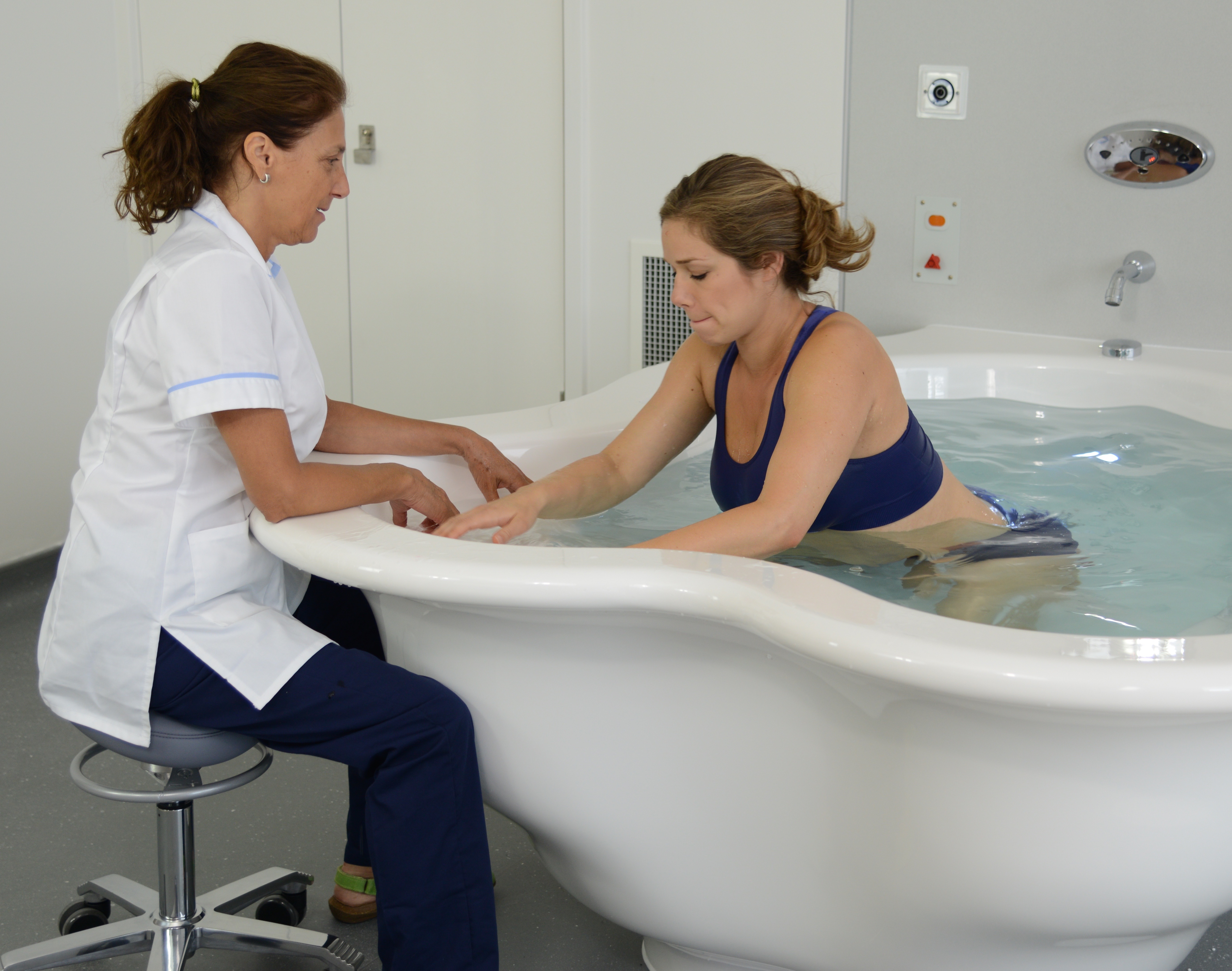
The photo above tells a completely different story and clearly demonstrates why midwives say that our water birth pools are the most comfortable and user-friendly.
The concave skirting panel is contoured to the shape of the pool to maximise space under the rim.
The extra-wide rim has a bull-nosed shape edge for added comfort and support.
Midwives sit, fully supported in comfort with their legs well under the pool and forearms resting gently on the broad rim.
The unobstructed rim allows the midwives to move easily around the circumference of the pool.
Getting into the pool
The simple act of getting into the pool is one of the most misunderstood aspects relating to the use water birth pools.
The reason that some water birth pool suppliers offer multi-step units with handrails is because their pools have narrow rims.
The truth is that multi-step units are dangerous and in the case of Active Birth Pools with extra-wide rims unnecessary as the photos below clearly demonstrate.
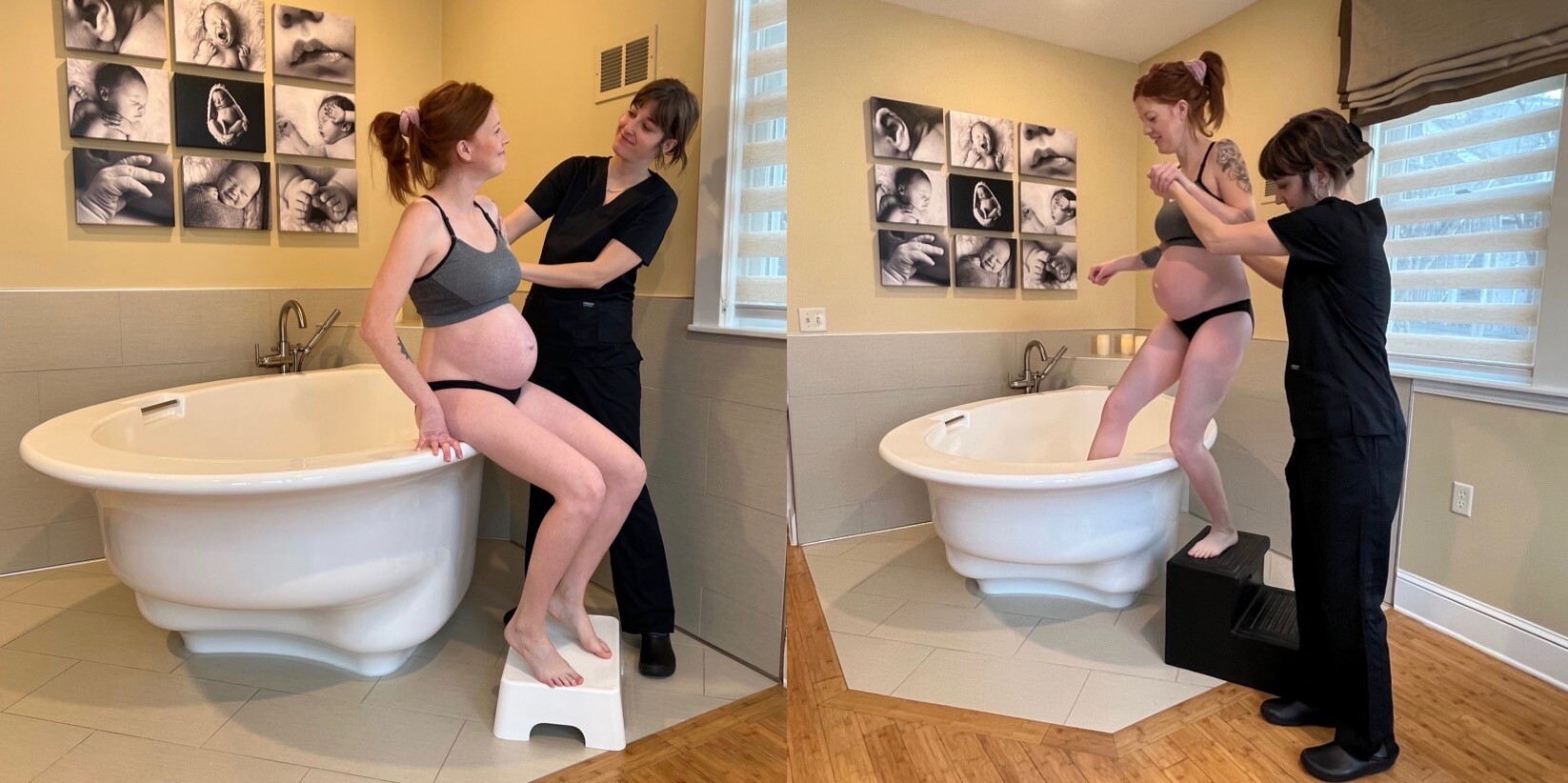
With the help of Manual Handling and Ergonomic Design experts we designed a simple, safe way for mothers to get into our pools.
The distinctive extra-wide, bull-nosed shaped rim is relatively low making it perfect for mothers to sit on and gently swivel into the water.
There is no climbing – mothers are grounded at all times and safeguarded from risk.
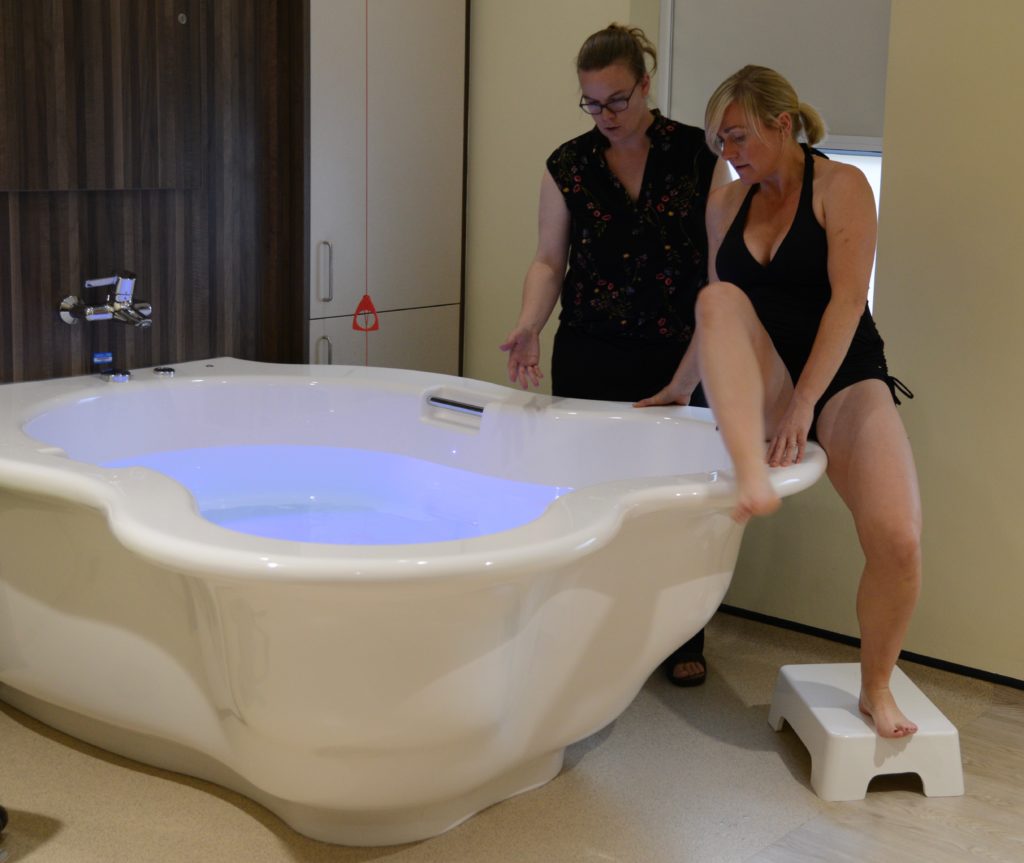
All women no matter what their shape or size will find it exceptionally easy to get into our pools.
Mothers don’t even think about it – they move instinctively and naturally lower themselves into the water.
And midwives will be safeguarded from the risk associated with physically supporting mothers as they climbs up the steps.
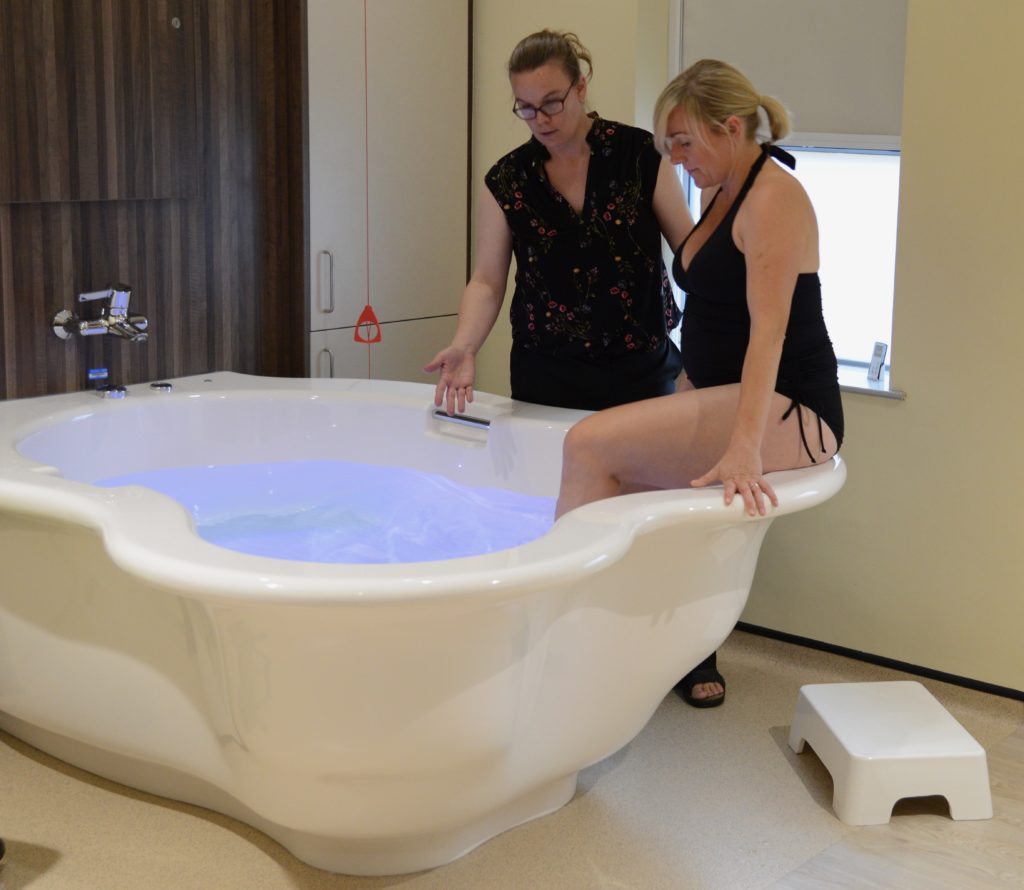
To put this in perspective:
The average height of our pools is 75cm – about the same height as a desk or dining table.
Our 15cm high single step makes the height of the pool 60cm – the same height as an ordinary bathtub.
You don’t need a big step unit to get into your bath at home, do you?
Emergency Evacuations
Active Birth Pools give midwives safe, practical options for dealing with emergencies.
The extra-wide rim and internal seats of our pools allow midwives to facilitate emergency evacuations in a way that is birth practical and safe.
Midwives can situate the mother an internal seat and gently raise her with the help of the buoyancy that water provides up to the rim and onto a trolley.
Or, use a net that is specifically designed for this purpose.
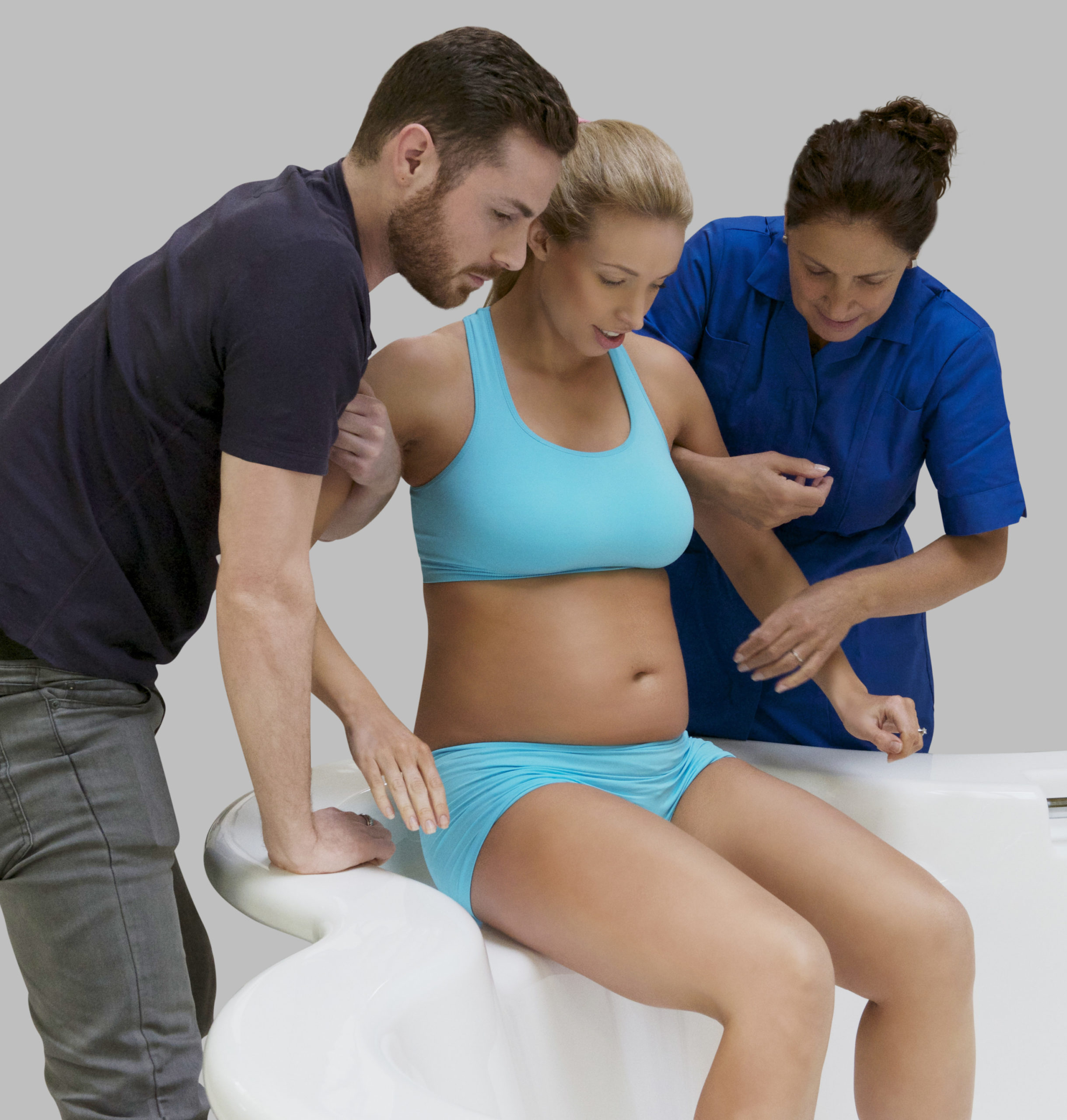
Manual Handling advisors may insist that women are evacuated from the birth pool with a hoist and that this facility is provided for.
Active Birth Pools are the only pools on the market designed to accommodate portable hoists should the need arise.
For full details about how Active Birth Pools enable midwives to facilitate safe emergency evacuations including protocols from NHS Hospitals please go to this page.
Rim Mounted Fixtures and Fittings
Many water birth pools have an array of rim mounted fixtures and fittings including taps, spouts, handheld showers and hand grips (similar to those shown on the whirlpool bath below).
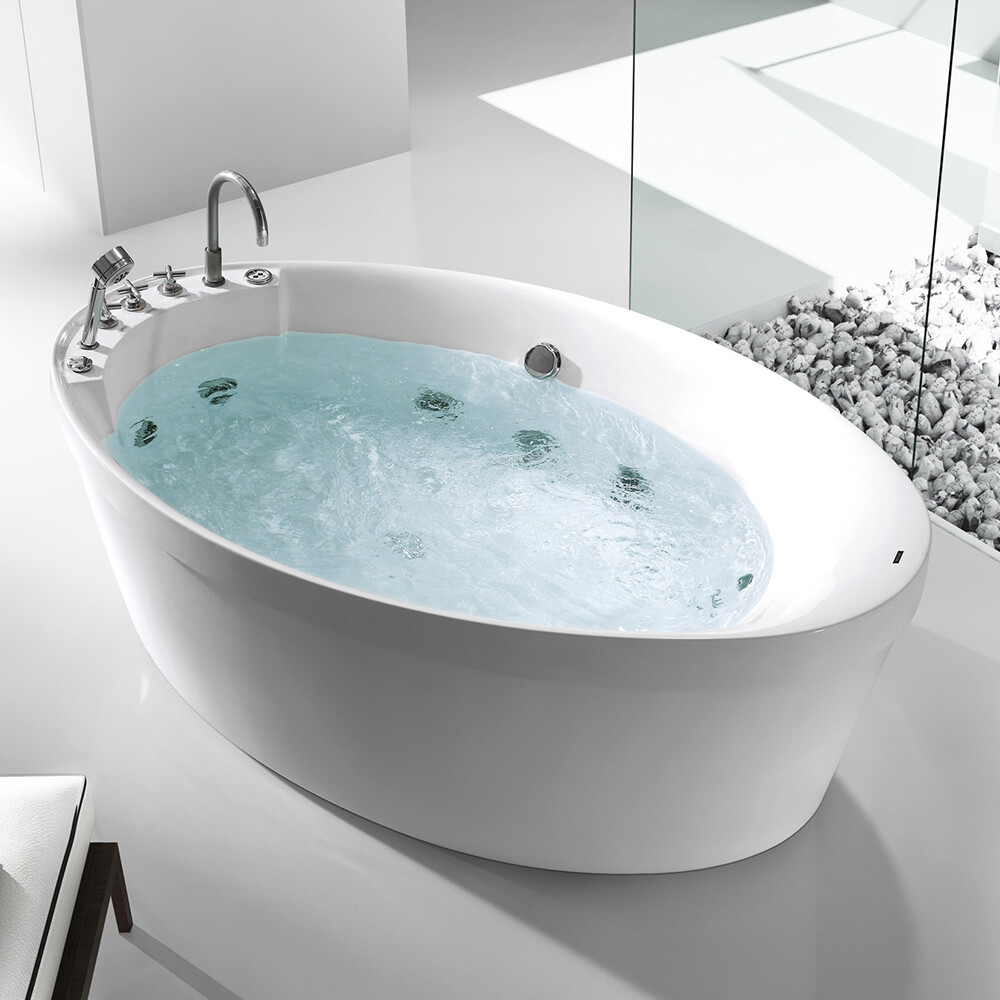
Not only do these fittings present an unacceptable infection control risk, but a signifiant health & safety and manual handling risk as well.
They form an obstruction that denies midwives freedom of movement and unencumbered access around the perimeter of the pool.
Most importantly there is a considerable risk of mothers hitting their head on the spout or injuring themselves on the protruding metal work.
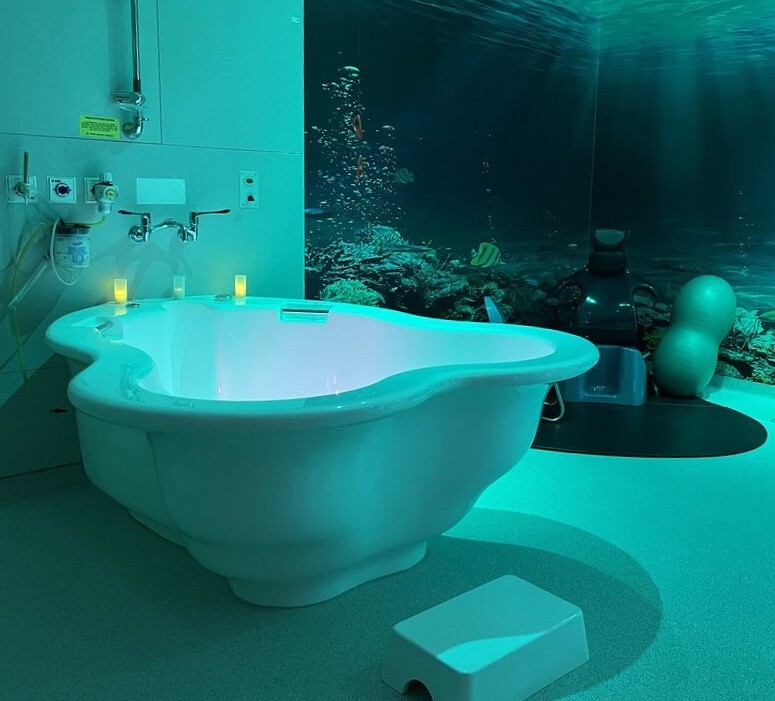
If you look at our new Active II Water Birth Pool (above) you’ll notice how the rim is free of potentially dangerous fixtures and fittings.
The handgrips are set into a recess in line with the rim and bonded into the fabric of the pool to deny bacteria the environment they need to grow.
The taps are mounted on an IPS panel with the spout 25cm above the rim of the pool
The distinctive ‘keyhole’ shape channel at the back of the pool contains the plumbing making it impossible for the mother to hit her head on the spout.

